The Art of Life Is Strange 2
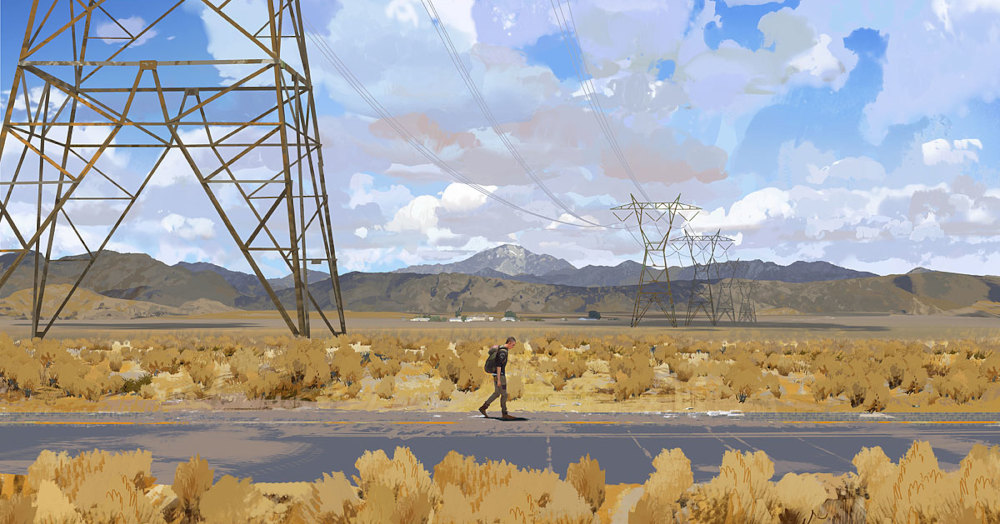
What sparked your interest in digital art?
I first ran into digital art in the early 2000s on a French forum called Café Salé. I was really impressed by the work that was being posted there. Guys like Barontieri, Sparth, and Vyle were pretty active members, and I remember downloading all of their images!
Like most kids, I’ve always liked drawing. The trouble with me was that I never put any real effort into it. I was happy with my stick figures, mainly because I was often bored, and it was enough to entertain me. You can imagine how I reacted when I first saw that forum. It was insane. I was looking at a level of skill that seemed impossible to reach. I didn’t even think about trying to get there at the time, but it did spark the idea that drawing for a living might be worth a shot.
Can you tell me about the first painting you were genuinely proud of? I often see artists struggling with low confidence or a lack of motivation because they feel they aren’t improving fast enough. What can they do to feel like they’re getting better?
I’m not exactly proud of it, but this is the oldest image I’m still happy with. It’s over twelve years old, with lots of elements that I’m still fond of nowadays—urban decay, junk, and a quiet moment. I like the contemplative stuff.
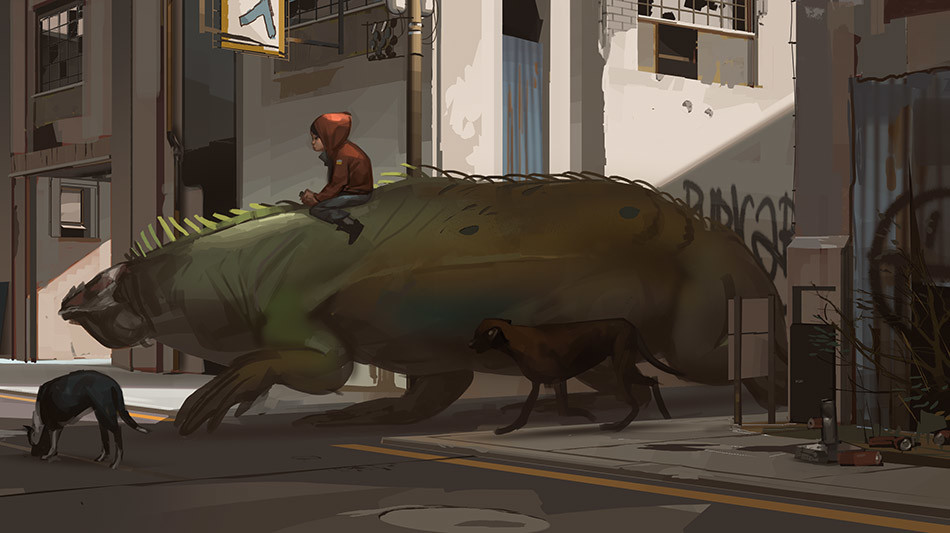
The idea of progress is super broad, and there are many ways to go, so I’ll just talk about what worked for me.
First, get out of your comfort zone. It’s easy to get stuck doing the same thing over and over because others like it or because it gets some attention on social media. But if you do that, you’re just replicating a technique that will ultimately trap you.
If I don’t need to think about what I’m painting, I know there’s something wrong. But if I’m struggling, I’m most likely learning something new.
Mistakes are good. I understand we can feel embarrassed about failing in a work environment or even on social media because it feels like wasted time, but it isn’t. You will always have to experiment to find your way. Work to find what you like, what looks nice to you, what is easy, but also discover what’s not.
I would always recommend making as many bad drawings as possible because they are the ones that will help you grow.
Let’s rewind a bit and talk about your first proper job as a concept artist. You worked at Frontier Developments, right? What was it like? Do you think you could take that experience and share some advice with all the fresh graduates stepping into the games industry now?
I was very laid back when I first started. It was way back in 2007 when I had a very weak portfolio and less than three years of focused drawing behind me.
It was so surreal being there. Kind of like going to a party even though you didn’t get invited, so you just eat all the snacks you can find before you get kicked out.
Honestly, I was feeling calm about the whole thing, but not the confident kind of calm. It was more of a “you’re gonna get fired soon” feeling.
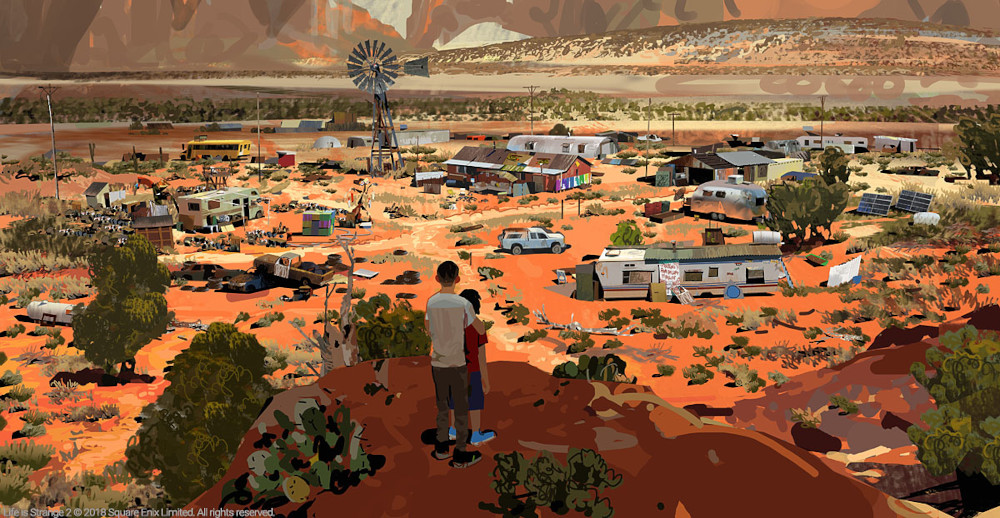
This is where I met Mark Tompkins. He was the only other concept artist on the project before I arrived, and he really helped and supported me. I remember one night when we were at a bar together, I asked him, “What the hell do you do when nothing good comes out of your entire workday?” He simply told me to go right ahead and show whatever I did… but that was all awful stuff, and I was too ashamed to show it to anyone, let alone an art director.
I remember having no idea how I got this job. I know it sounds like imposter syndrome, but I truly was one at this point. These thoughts and worries made me feel an urgency to learn how to do my job fast, and every artist there, from guys working on characters to environments to props, was really kind to me. I learned so much in a few months that the feeling of being a fraud faded away.
Later, I chatted with John Laws, the director of art at Frontier Developments. He told me what he liked in my portfolio back then, basically explaining why I got picked. It was all in the storytelling. Most of my paintings were of scenes where something was happening after all. I had characters who were interacting with one another, and it was that narrative aspect that spoke to him.
Now that I’ve gotten older and sometimes sit on the recruiter’s side of the table, I notice that the art isn’t perfect, but the idea is.
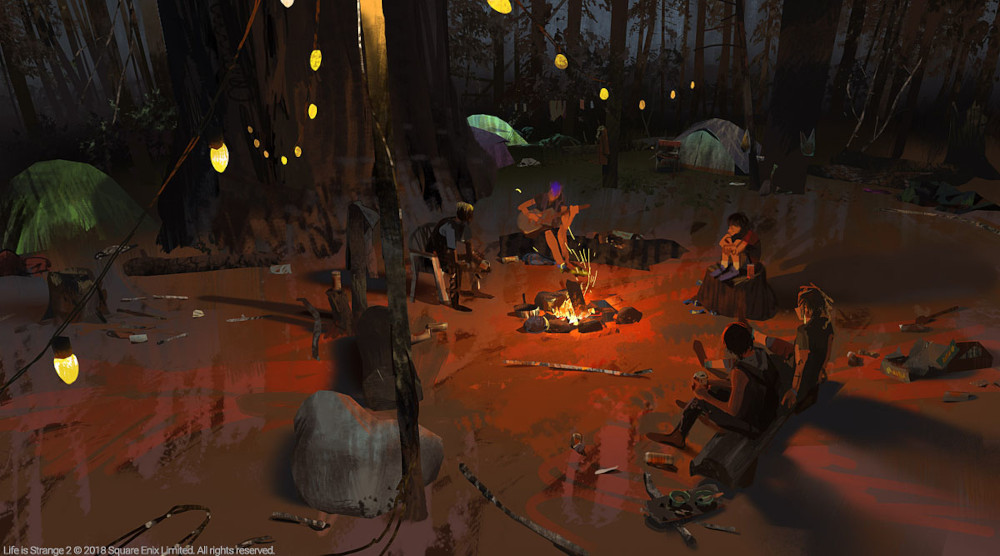
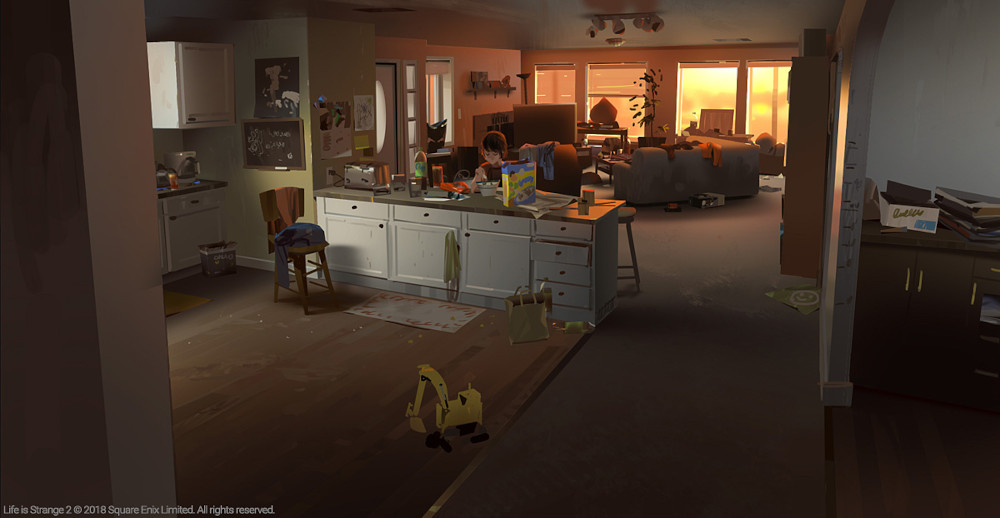
I’d love to learn about your favorite artists, classical or contemporary. Please tell us which of the masters inspire you and why.
Like many others, I like the impressionists, both for the subjects (everyday life) and the technique. I especially enjoy Monet’s work. He always tries to get the mood and the color right, but not so much the details.
There’s also Sparth, who’s been inspiring me for so long. He’s been sharing his techniques for years, got copied a thousand times, but still continues to share. He’s a truly great artist, and I believe he’s a great human being as well.
Please walk us through your creative process and highlight some of your favorite techniques.
The first thing I do is gather reference photos from all over the Internet. I like using tools like Flickr and Google Images, but even my photos will do as a last resort (I’m lazy). As I’m doing this, I want to find ideas for the lighting, mood, architecture, character posing, junk details, etc. Simply put, when you’re collecting references for a painting, anything and everything that might help you when you begin is good.
Once I’ve all that, I make a rough line sketch. I don’t do silhouettes or thumbnails or whatever. I just redraw on top with a new layer until I’m happy with my composition. I also never clean up the lines. Once I’ve finished with my base, I move straight on to blocking out colors instead, always checking the references on my second monitor.
Then when I’m satisfied with the lighting of the big blocks, color and all, I go for the tiny details. One of my favorite tricks in Photoshop is locking the transparency on a layer. Doing this lets you lock a shape before painting on it freely. You can easily do this without losing whatever makes the shape work. You can try all sorts of things out, then go back if needed. This technique is great for characters, props, vehicles, and many other things.
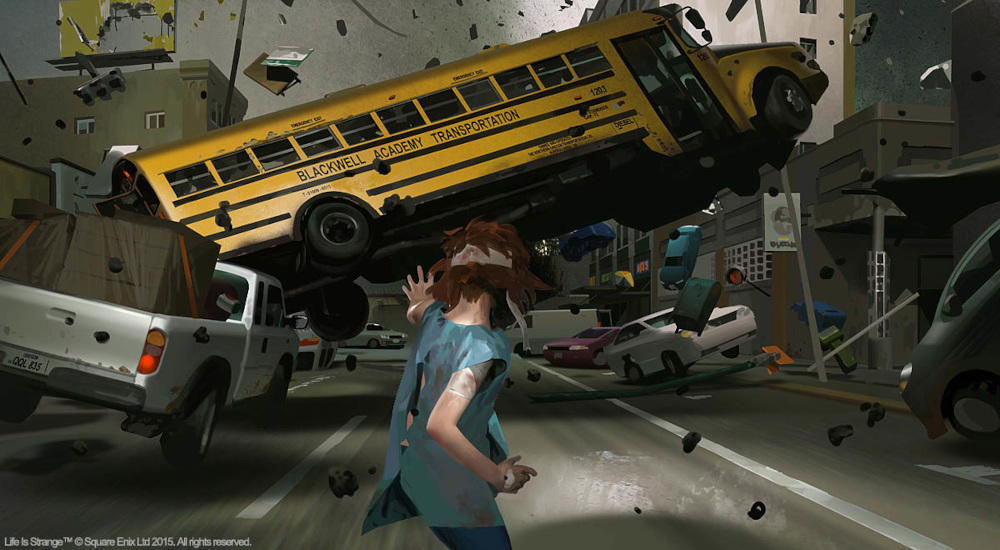
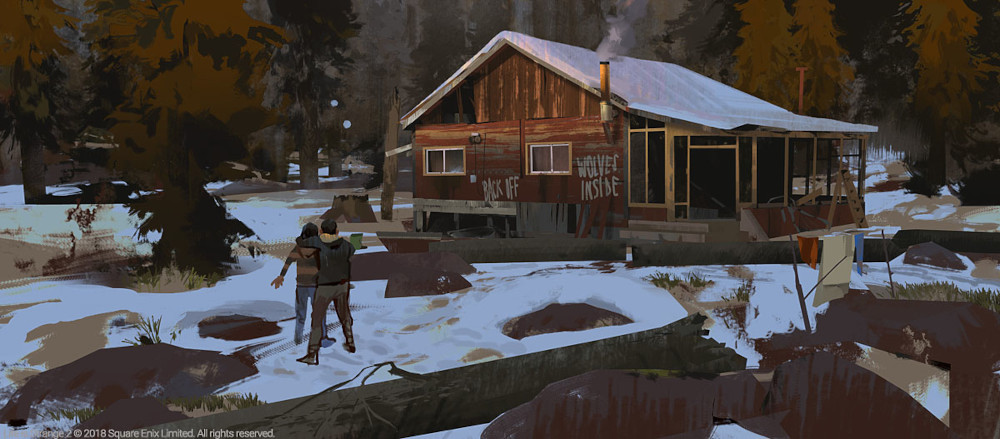
You’ve been working on the Life Is Strange series for years now. What’s it like? Not every concept artist gets to stick with a single game world for so long.
I’ve been working on the Life Is Strange franchise for seven years. It’s cool, I know the game’s world pretty well, and although it’s been about new characters every time, you can have a lot of fun making references to the previous game. You can make the characters like the same music bands, eat the same brand of cereal, etc. It’s all stuff that’s almost impossible to do with any other title.
You can also develop your ideas over multiple games, like the Hawt Dawg Man cartoons Max talked about in the first game. Well, we actually made one in the second game!
Could you tell me about one of the challenges you and your team had to overcome during the production of Life Is Strange 2?
The events in Life Is Strange 1 all happened during the same week, and everything took place in Arcadia Bay. Life Is Strange 2, however, was almost a year, meaning we had four seasons across five states.
Compared to the first game, we had a huge amount of characters and environments to do. Max was only changing her T-shirt most of the time, while Sean was evolving—turning into a bum, growing his hair, cutting his hair, changing outfits a few times per episode, living a rough life, etc. And then there was the second main character (Daniel), alongside the rest of the cast, all changing with each new episode.
The same thing happened with the environments. We had to start again almost every episode because things were changing. There’s different architecture, vegetation, and weather (with the snow that starts later), so our team grew in size, but it was still a crazy amount of work to do.
Life Is Strange is an adventure game, so players will always pay particular attention to detail. While it’s only a collectible item (meaning it doesn’t show up on what we call the critical path), there was this hidden box of toys that took forever to design. But hey, if the players find it, they’ll learn new things because of it. This is what we call environmental narration, and it’s so cool to do.
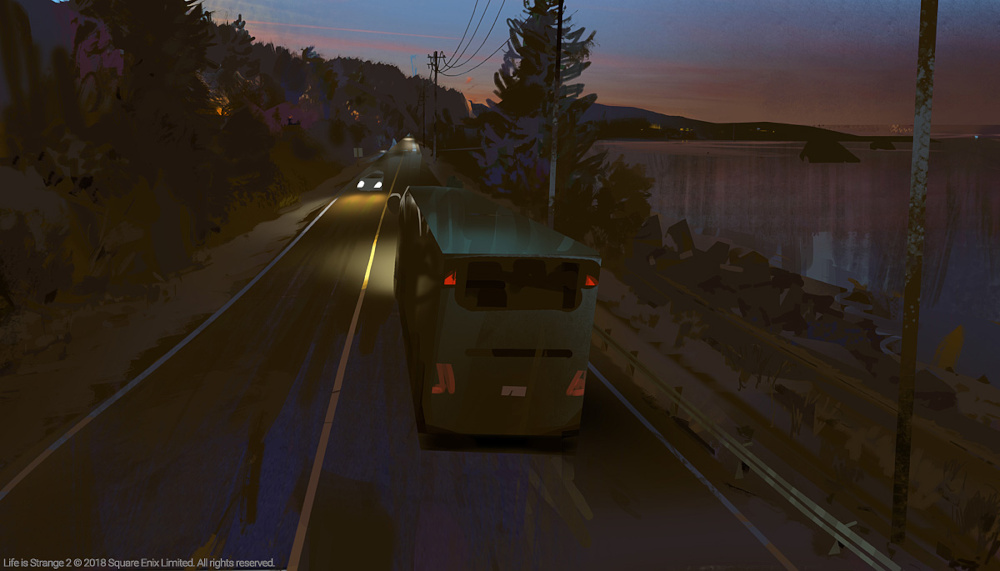
What’s the best advice you could offer to artists wanting to work for DONTNOD Entertainment in the future?
I am not sure an artist should aim to work for DNE or any other big studio. There are lots of teams and even more projects out there. You might miss an opportunity elsewhere if you focus on one studio too much.
I would prioritize the project when job hunting, but if it’s DNE they’re after, their best bet is to apply to a job opening with the strongest portfolio they’ve got. Just remove all the average stuff and keep only the best.
A portfolio with five great pieces will make a better impression than a portfolio where five are good but fifteen are average.
Please try to only show us the things you like to do; that way, you’ll get a job somewhere where you can work on the things you’re most passionate about. Also, reaching out to artists already working there and asking for advice can help, too.
To round things off, it’d be great if you could share some of your current goals for the future. What are you working towards these days?
I have had two sons since we last spoke. Right now, I’m trying to survive the incredible amount of energy they drain from me. I’ve been quiet over the last few years, I found it very difficult to work on personal art, and I could not improvise at work too much. We had specific things that needed to be done, but now that Life Is Strange 2 is finished, we’ve started working on something new and exciting at DNE. I can’t talk about it yet but hopefully soon enough.
If you enjoy Edouard’s work, consider visiting his website or following him on Twitter.
Please donate to perephoneia.art if you liked this interview. Your support helps cover the hosting costs for the website, keeping it free and online for others to discover.
